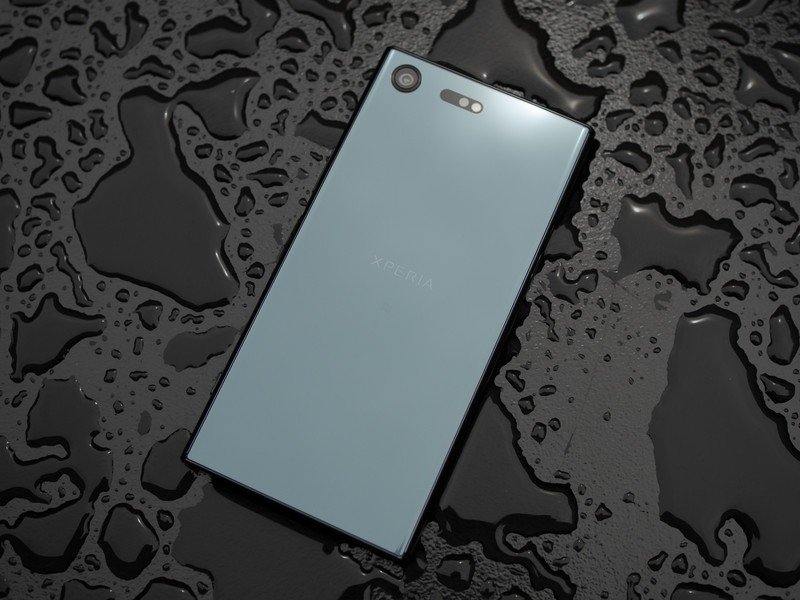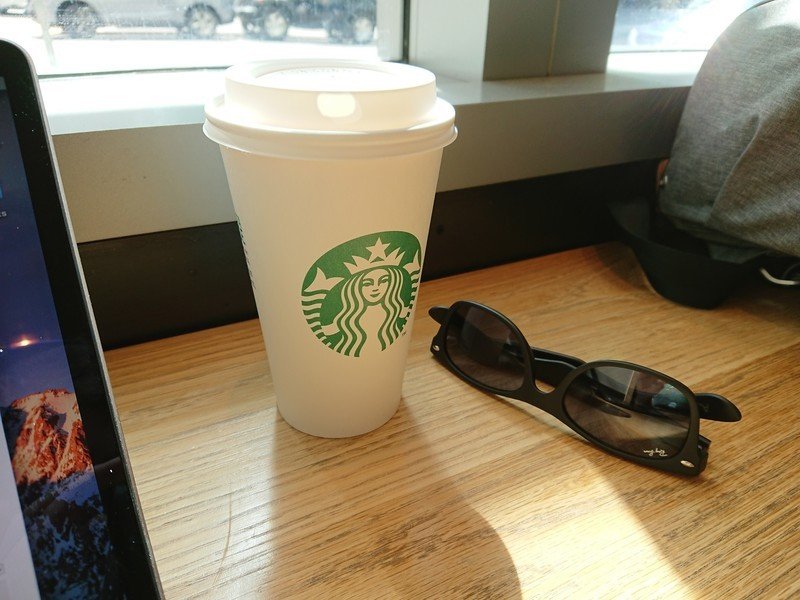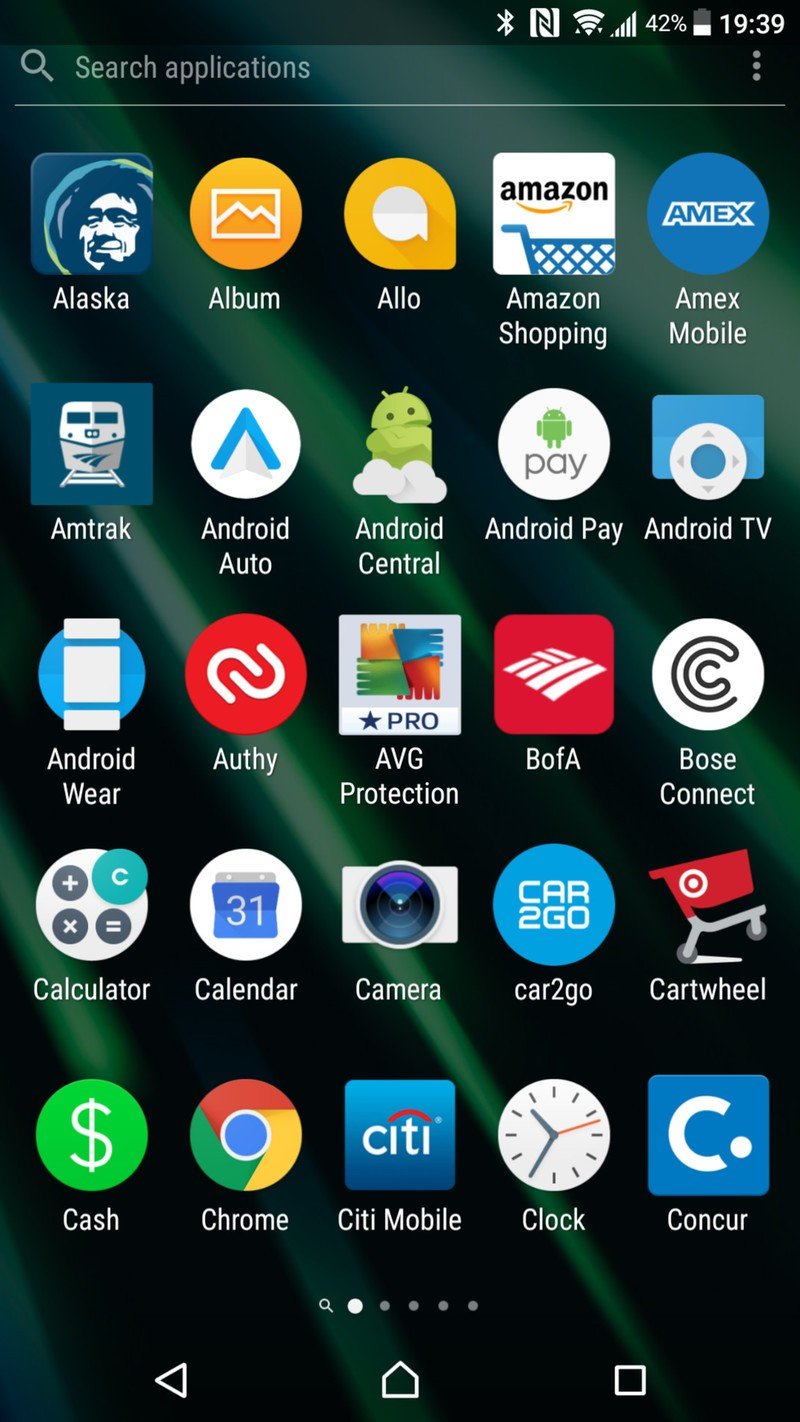Sony's march of alphabet soup phone names continues on with the Xperia XZ Premium, and as you'd expect from such a name this one's all-out high-end. It has the specs and features to match the flagship competition released in 2017, plus undeniably unique hardware design and a few extra tricks up its sleeve.
And despite Sony's continued floundering in the U.S. high-end market — relying on its mid-rangers to provide any glimmer of hope in sales growth — the Xperia XZ Premium is launching here with an ever-so-Sony price of $799. With a price tag like that, the Sony has to nail everything if it's going to win over buyers who rarely break the $700 point — particularly for a brand they haven't likely bought a phone from in some time.
See how it all comes together in our complete Sony Xperia XZ Premium review.
About this review
I (Andrew Martonik) have been using a U.S. unlocked Xperia XZ Premium for one week in the greater Seattle, WA area on T-Mobile. The phone arrived on Android 7.1.1 (45.0.A.1.219) with the April 1, 2017 security patch and was not updated during the course of review. The phone was provided to Android Central for review by Sony.

Polarizing
Sony Xperia XZ Premium Hardware
Sony's phones really are something else. It has gone well beyond the several iterative takes on "Omni-Balance" to a fresh design that feels new while clearly still having those deep Sony design roots that make it unmistakably a Sony phone. At 156 x 77 x 7.9 mm it's large considering its 5.5-inch display, and at 195g it's downright heavy. For a sense of scale, it's a couple millimeters larger than the HTC U11, and a hair smaller than the LG V20 — that's big.
You don't need to read the dimensions to know it's a big phone.
You didn't need to read the dimensions to know it's big — just look at a photo or pick it up. Sony's longstanding "don't really care about ergonomics" attitude toward design is still here, and that starts with large bezels on both ends of the display and barely-rounded corners. The sides are comfortably curved and the buttons are in just the right places, but the perfectly flat back mixes with the tall frame and heavy weight to give you a phone that's a literal handful.
Get the latest news from Android Central, your trusted companion in the world of Android



It's not rational, but I adore the overall design of the Xperia XZ Premium.
But for all of those illogically large dimensions and hand-unfriendly details, I adore the overall design of the Xperia XZ Premium. It's not rational, I know, but Sony's designs are so iconic, so unique that I am just drawn to them. The blocky corners, the symmetry and balance of the design, and the perfect fit-and-finish all appeal to me. It feels perfectly built ... almost hand-made in a way. The heft and feel of the phone absolutely match the price tag. Yes the Gorilla Glass 5 back is "reflective af," as Daniel Bader originally put it back at MWC 2017 (especially the "chrome" model), but it looks great to me — particularly in this handsome "Deepsea Black" color with hints of blue and green in it.
At the same time, I know Sony's designs are also polarizing: I feel like everyone I show a Sony phone to is either enamored with it or appalled. I'm in the former camp, and Sony's mobile designers are obviously proud of what they do — but this doesn't seem to be a design that appeals to a wide enough audience.

Now, the main attraction: that nice 4K resolution 5.5-inch display. It's Sony's second 4K display, but this time around it also includes HDR support — but in general day-to-day use, the important thing is the screen looks great. It still exhibits some of the generic LCD downsides like increased glare in sunlight and less-than-perfect blacks compared to AMOLED, but that aside I'm super happy with its overall tuning. The resolution makes everything look pristine, and the colors, brightness and viewing angles are great as well.
Audio experience
Sony is one of the last manufacturers offering straight-up dual front-facing speakers in what it calls "S-Force Front Surround." The benefits are simple: the speakers are facing toward you, therefore you get a better sound experience. The speakers do indeed sound good, and there's a far lower chance you'll inadvertently block them like bottom-firing speakers, but they don't get quite as loud as I would like — falling beneath the HTC U11's new BoomSound setup. Thankfully the dual openings haven't compromised its waterproof rating, which stands at IP68.
With Sony's heritage in sound quality there's of course a 3.5 mm headphone jack here, too, which sadly is becoming something I actually have to point out in a review as a positive. Sony talks a lot about its audio tuning on its website, including its high-res output, automatic headphone adjustments and compatibility with its Digital Noise Cancelling headphones. But I'm hardly an audiophile — it all sounds just fine to me with any headphones I've plugged in.

Clean and fast
Sony Xperia XZ Premium Software and experience
I quite enjoy Sony's take on Android, mostly because the company seems to be a good steward of Google's vision for the platform and doesn't want to mess about with its underpinnings. In the past couple of generations Sony's software additions have boiled down to a different lock screen, a few icon changes and some pre-installed apps — everything else is pretty much what you get from Google in Android 7.1 Nougat.
Sony's launcher is effectively a lightly themed stock Android launcher, even going so far as to integrate the Google Now feed on the leftmost pane, though it hasn't quite jumped up to speed with the more modern Pixel-style app drawer or long-press shortcuts for apps — I would expect that to come soon enough. Sony subtly themes many of its own apps — contacts, phone, etc. — and also includes a handful of bloat-ish ones — News, AVG protect, Xperia Lounge, etc. — that you can disable or uninstall. Nothing out of the ordinary here.
The place Sony has most substantially changed the phone is in the settings, where it has peppered in quite a few extra options, tweaks and intelligent controls for things like storage, battery and system management. None of it is in your face or gets in your way, though, and this is nowhere near the piles of settings you'd see on a Galaxy S8. It's all thoughtfully sorted and slots right into the typical Android settings framework.
Performance is great, and consistent as well.
The Xperia XZ Premium gives you industry matching specs, with a Snapdragon 835 processor, 4GB of RAM and 64GB of storage. It all adds up to superlative performance, which is extra impressive considering that 4K resolution it's pushing around. Much like its software isn't far removed from stock, its performance isn't far off from a Nexus or Pixel.
Everything I did on the phone absolutely flew without any slowdown or hiccup, with great app performance and consistency. Subtle things like touch response and scrolling speed were also spot-on. That's great to see because coming in I was worried that the 4K display resolution was going to be a drain here — but it doesn't seem to be. Now I'm not entirely sure, but I wouldn't be surprised at all if Sony was doing some sort of scaling down to a lower resolution in some instances to both make things look good and keep fluidity up. But for what it's worth, I could never tell when that was happening.
Battery life
Sony continues to emphasize battery life, and with a 3230mAh battery, a power-efficient Snapdragon 835 processor and some optimization the XZ Premium is a great performer. I wasn't worried about my battery running out a single time on the phone, and ranged from ending lazy weekend days with over 50% battery to more hectic weekdays with still 25% left in the tank. That means I never got anywhere near needing the "stamina" mode to extend it artificially, nor did I ever have anxiety about remaining battery in the evening with outings planned for the night.
Sony continues to make battery life a priority — the XZ Premium lasts a long time.
I think the most impressive part about the XZ Premium's battery performance is just how consistent it was throughout the day. There were no deep drop-offs during heavy use — it pretty consistently drained so matter what I did with it. Sony gives you a bit of a humblebrag meter under the battery icon with the notification quick settings expanded that estimates hours of life remaining — it so frequently estimates over 10 hours left, even when at something like 30% battery, that it seems like it's lying ... but it's actually true.
Clever charging technology inside the phone — branded "Qnovo" for whatever reason — also aims to prolong the life of the battery cell inside by keeping the phone from sitting on a charger at 100% overnight. Instead, it watches when you typically charge your phone and keeps it around 90% charge, only to bring it up to 100% before you normally unplug. Little things like that are really nice to see implemented seamlessly and smartly.
That fingerprint sensor situation
Yup, we know Sony still can't sell a phone in the U.S. with a fingerprint sensor. It has to do with some sort of contractual obligation it made (or backed out on) that legally prevents it from shipping the feature. And yes, the Xperia XZ Premium sold everywhere else in the world has a fingerprint sensor built into that side-mounted home button.
It sucks, really bad, to not have such a standard feature on this $799 phone — particularly when you can get it on a $199 phone — but there's nothing Sony can do right now. It's probably a deal breaker for most of us, and it was surely a pain point in reviewing the XZ Premium — more so for securely accessing my password vault and banking apps than necessarily unlocking the phone. We all hope that this ends soon, but right now we're stuck.

Short of flagship quality
Sony Xperia XZ Premium Camera
In 2017, Sony's actually made the decision to lower its camera sensor resolution to 19MP, which has increased pixel size to 1.22-microns for improved low-light performance; the lens remains a relatively standard f/2.0 aperture. Sony continues to go on about its "5 axis" image stabilization, but this is still all-digital stabilization and not hardware-based stabilization (OIS).
Sony has finally got the camera speed up to a flagship level.
This new camera arrangement does have some tricks up its sleeve including a hybrid auto focus system, predictive photo capture and and anti-distortion shutter. They're all focused on trying to capture photos as quickly as possible, but also give you the shot you wanted rather than the exact frame you captured when the shutter was pressed.
Sony has finally, absolutely, consistently figured out the speed aspect of its camera app. The Xperia XZ Premium camera opens in a flash, focuses quickly and captures immediately every single time. It's finally a camera experience that doesn't feel like it's laboring every time you use it, which is something other companies figured out a couple generations ago. The camera app itself is still fine, though not perfect: it still wants to separate functions out oddly into different modes (like 3 shooting modes for different video types, why?), and lock everything down if you shoot in "superior auto" mode, leaving you to go to Manual to tweak something as small as toggling on HDR.




















Sony's insistence that its superior auto mode is The Best Thing Ever™ is unfortunately an incorrect assumption. When shooting in this mode, the software is super aggressive about switching into different scenes and swapping around settings ... that feel like they're incorrect for what you're shooting. Far too often the XZ Premium didn't expose properly or didn't apply HDR, leaving you with a dull and uninteresting shot. The biggest issue, though, was edge detection and sharpening: in superior auto, all fine detail is aggressively over-sharpened and ground down to a mush. Photos so often looked unnaturally smooth to a point where it put me off right away.
Shooting in Manual mode, you can get great photos — but Sony still isn't competing enough.
Things are fortunately much better when shooting in manual mode, where the over-sharpening was dramatically reduced. Even when not needing to tweak any settings, I would 100% recommend shooting in manual mode simply to keep the camera from over-thinking (incorrectly) how it processed shots. I took some really good photos with the XZ Premium in manual mode, but even still it had bouts of inconsistency in the way it metered or was able to properly expose for the scene — even HDR couldn't make up for some scenes that were just too dark. Late at night, the lack of OIS combined with the weak processing to result in just decent photos.
The one thing that truly frustrates me about Sony's camera strategy is that it throws so many brands at you — Motion Eye, Exmor RS, G Lens, BIONZ, SteadyShot and probably more — that you're lulled into thinking this must be the best camera ever. But the proof is in the pudding, and Sony's phones still aren't up to speed with what the flagship competition can do — instead, you get a camera befitting a phone that costs $300 less.
Slow motion video
I don't often do breakouts to talk about the video performance of phones unless it really stands out one way or another. With the Xperia XZ Premium, Sony has a really awesome feature it's touting, 960 fps slow-motion video, that I just had to spend time with.
Super-slow-motion is a neat trick, but still requires far too much compromise.
From the start, it's tough to initially figure out how to use the slow-motion mode. We're so used to "typical" slow-motion video at 120 or 240 fps where we just press record after switching into that mode, and it slows it down. With something as high frame rate as 960 fps, you can only record a very short burst (about 0.15 second) that's then slowed down. You can choose to record that second of 960 fps video in the middle of a regular 30 fps video, or on its own with a single tap. Because it's such a short duration, it really takes some practice to nail the moment when you want to capture slow motion.
Then there's the issue of how far the camera has to crop in on the sensor to record the slow motion. It already crops in tightly to shoot 1080p video at 30 fps, then a bit more for 60 fps, and even more for 4K — but it crops in really far to record 960 fps. In order to capture a full scene as you'd expect, you have to take a few full steps back from where you would normally be to take a photo holding your phone. With the lack of OIS on the camera, cropping in this far introduces lots of motion from hand shake as well — you need to steady yourself or use a tripod for great results. Remember you're also only getting 720p output here, so there isn't any wiggle room.
The results are amazing to see out of a phone. So long as you get the hang of recording in order to capture things that are moving fast enough to actually look good in super-slow-motion, it's something you just don't get anywhere else. The issue is the handful of compromises involved with capturing such slow video that make it more of a novelty in the end rather than a truly differentiating feature.

Lust ... and disappointment
Sony Xperia XZ Premium Bottom line
In many ways, I'm a huge fan of the Xperia XZ Premium. It isn't slick, small, light or ergonomic, but it isn't trying to be — Sony's hardware design is unique, beautiful and stands out from every other smartphone available today, and that's why I love it. Beyond the design, the Xperia XZ Premium gets a lot of the flagship features down: a really nice display, fast and consistent performance, and all of the right internal specs. The battery life, which is always a top feature for today's smartphone buyers, is top-of-the-pack.
The issue, as is so often the case with Sony's phones, is twofold: it's too expensive, and there are a couple of head-scratcher shortcomings.
The Xperia XZ Premium is the absolute top-of-the-line smartphone for the company, and therefore has a retail price of $799. Outside of a Galaxy S8+ or iPhone 7 Plus, people just don't often pay that kind of money for a phone. And they particularly don't pay that much for a phone that in the U.S. doesn't have a fingerprint sensor, and still sports a camera that doesn't get anywhere near the competition.
At a lower price, in a market where it's okay to miss a couple of features but still provide a good value in order to sell, that would be manageable. But at $799, people expect to get just about everything — and even though the Xperia XZ Premium gets so close, it's missing just enough that it's instead an exceptionally tough sell in the U.S.

Andrew was an Executive Editor, U.S. at Android Central between 2012 and 2020.







